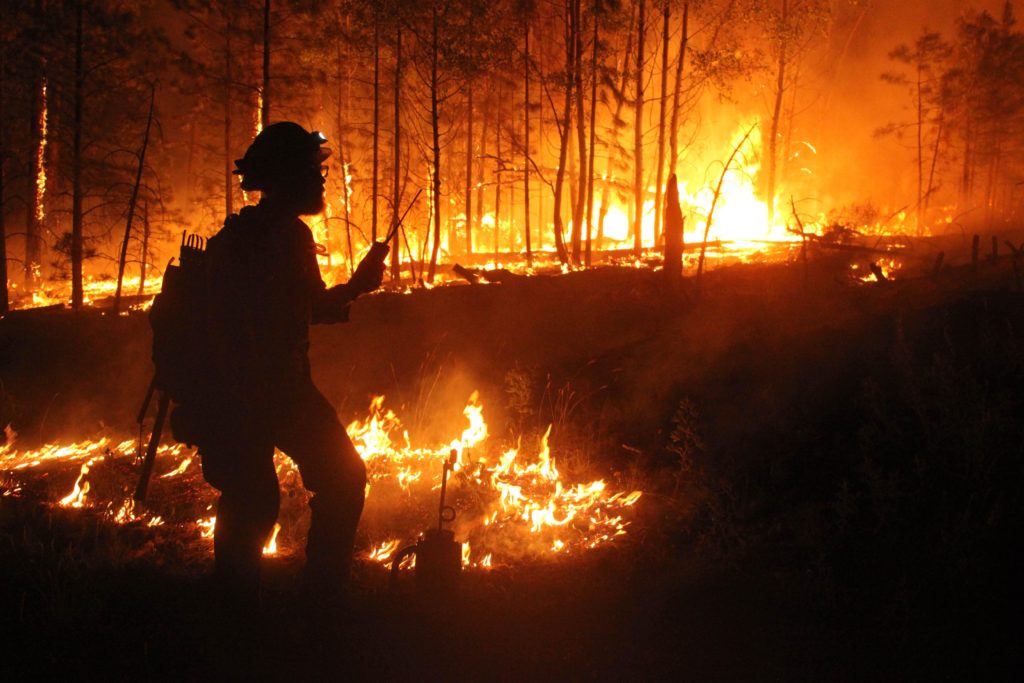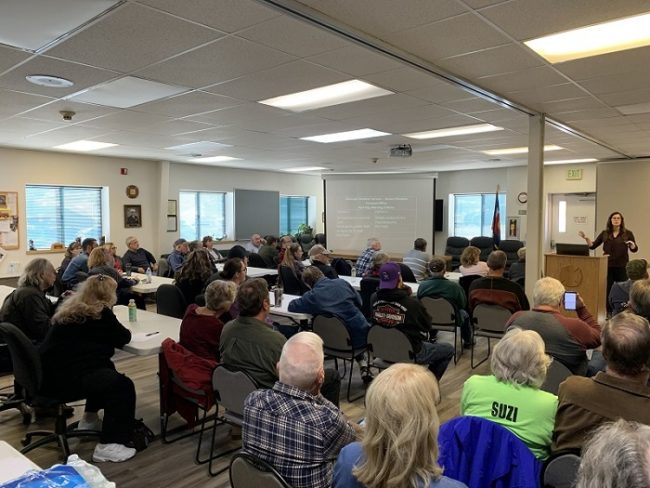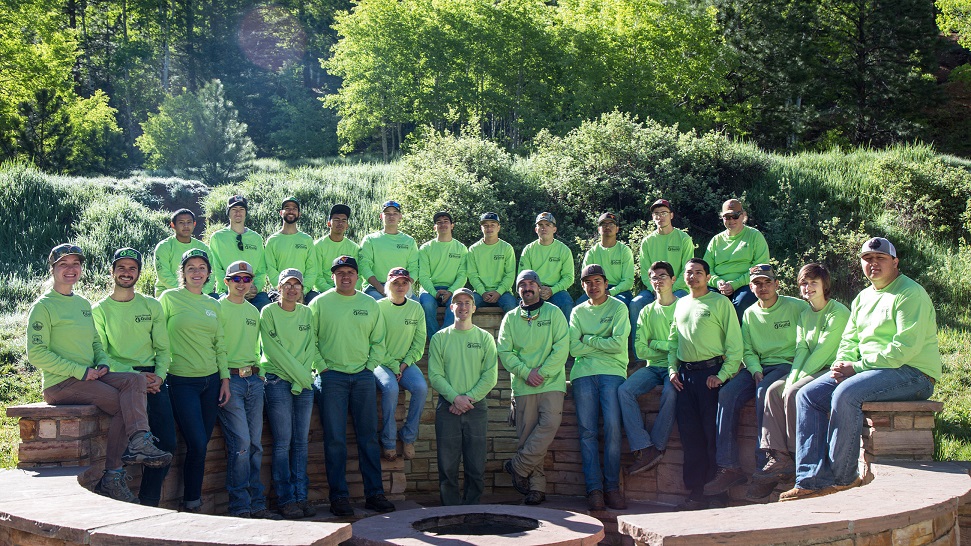Responding to the challenge posed by wildfire
Written by Zander Evans
Wildfire is arguably the biggest forest stewardship challenge for communities, landowners, and managers in a large swath of the country. The wildfires of 2020 have burned over 8.7 million acres and damaged nearly 17,700 structures – underscoring the devastating human impact. As smoke blanketed communities this summer, several people asked what the Guild is doing to step up to the crisis. In fact, the Guild’s work on reducing the negative impacts of wildfire on ecosystems and communities goes back decades. We have been working to:
- bring good fire back to fire-adapted ecosystems,
- expand and share fire science,
- train the next generation of ecologically minded firefighters,
- pushing for better fire policy, and
- making communities safer.

The Guild has both supported and led prescribed burns with our partners. We are a proud part of the Fire Learning Network led by The Nature Conservancy that uses a collaborative model to plan and implement prescribed fire in key landscapes across the country. The Guild’s participation in prescribed fire was a natural outgrowth of our efforts to restore forest health through thinning. As thinning projects advanced, Guild staff saw the need for the next step: return the essential ecosystem process. Active participation in prescribed fire also reflects the Guild’s commitment to “practice what we preach.” Our mission is to both practice and promote forest stewardship.
Our engagement in prescribed fire highlighted other needs such as research. The Guild has contributed to fire science for over a decade. From early work assessing the effectiveness of fuel treatments in New Mexico, to brand-new research on the management of naturally ignited wildfires for resource benefit, the Guild has made a significant contribution. Often the Guild serves in the role of science synthesis and dissemination. The Guild helped develop and continues to play a major role in the Joint Fire Science knowledge exchanges that work to foster two-way dialog between managers and researchers.
 Another place the Guild connects knowledge and practice is through the development of fire adapted communities. The Guild is actively working with communities in New Mexico and Colorado to develop wildfire protection plans (CWPPs) and to share best practices for CWPP development across the country. Because of our office in Santa Fe, staff has been particularly active in the Santa Fe Fireshed Coalition, which is a unique multi-jurisdictional effort to restore the forest health in the city’s watershed and protect against uncharacteristic, high severity wildfire. This collaborative work and its support for prescribed fire likely helped to keep a fire this summer from becoming a disaster. The Guild is working on exporting successes from the Santa Fe Fireshed to other regions. For example, we are working to bring a successful air filter loan program that protects vulnerable people from smoke during prescribed fires to other communities.
Another place the Guild connects knowledge and practice is through the development of fire adapted communities. The Guild is actively working with communities in New Mexico and Colorado to develop wildfire protection plans (CWPPs) and to share best practices for CWPP development across the country. Because of our office in Santa Fe, staff has been particularly active in the Santa Fe Fireshed Coalition, which is a unique multi-jurisdictional effort to restore the forest health in the city’s watershed and protect against uncharacteristic, high severity wildfire. This collaborative work and its support for prescribed fire likely helped to keep a fire this summer from becoming a disaster. The Guild is working on exporting successes from the Santa Fe Fireshed to other regions. For example, we are working to bring a successful air filter loan program that protects vulnerable people from smoke during prescribed fires to other communities.
 As part of the Guild’s focus on supporting the next generation of forest stewards, we have expanded our training efforts. We are just concluding our fall Forest Stewards Youth Corps which trains youth from rural communities to be firefighters – and thoughtful ecological stewards. This year was complicated by the pandemic, but a focus on safety allowed the participants to complete the program and stay healthy. As the Guild continues to grow, we hope to find ways to expand our training to other regions and continue to step up to the challenge posed by wildfire as the climate warms.
As part of the Guild’s focus on supporting the next generation of forest stewards, we have expanded our training efforts. We are just concluding our fall Forest Stewards Youth Corps which trains youth from rural communities to be firefighters – and thoughtful ecological stewards. This year was complicated by the pandemic, but a focus on safety allowed the participants to complete the program and stay healthy. As the Guild continues to grow, we hope to find ways to expand our training to other regions and continue to step up to the challenge posed by wildfire as the climate warms.
